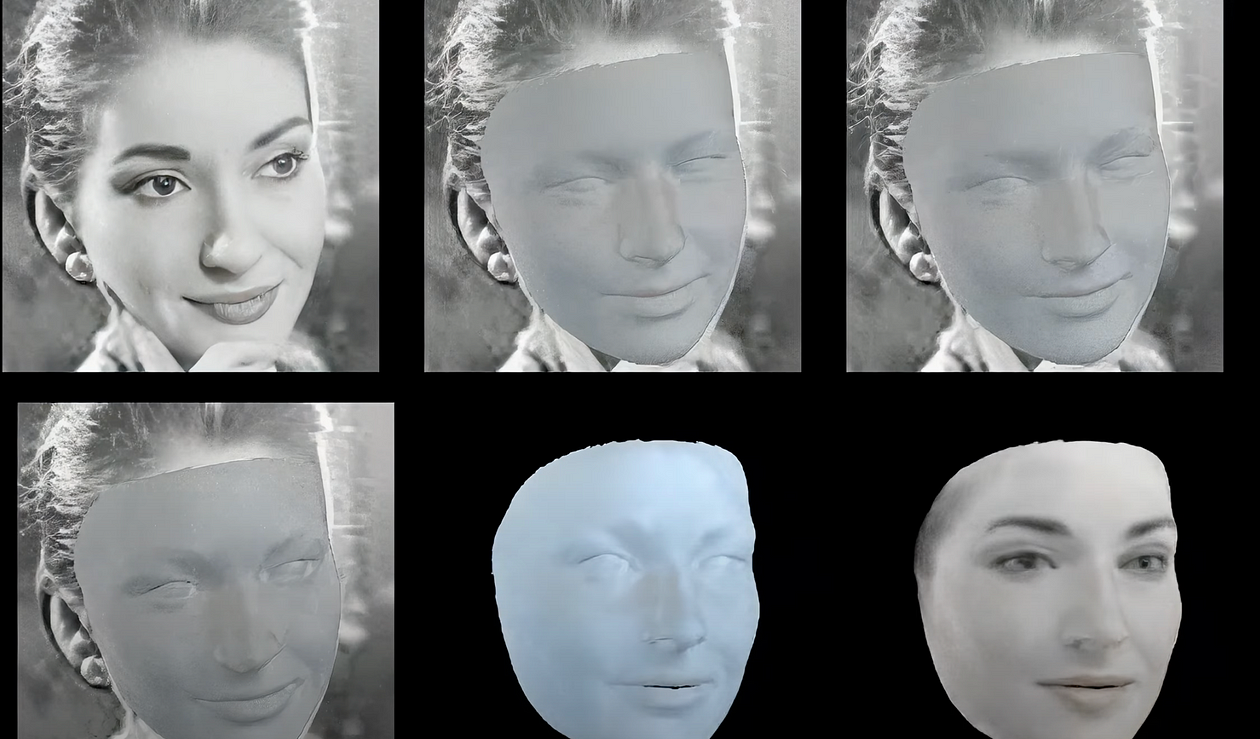Future AI innovation could see the emergence of AI systems that not only match but potentially surpass human intelligence in the workplace

The business world is experiencing a revolution that is hitting industries faster than any revolution that came before. AI technology has revolutionized business operations and is reshaping our work methods. It is being employed by businesses to tackle challenges and execute tasks that previously demanded human input. Across diverse sectors and job roles, AI is employed for identifying trends, making forecasts, and generating content.
While some economists estimate that around 300 million full-time jobs may involve AI-assisted tasks, others foresee the new technology generating new job opportunities where humans collaborate with machines.
The current role of AI in workplaces is highly specialized, mainly serving as a complement to human tasks, such as customer service chatbots, robots collaborating with factory employees, or cancer diagnostic systems. However, the AI revolution poses a risk not only for job replacement but also for the health and well-being of a new faster workforce.
As the influence of AI in the workplace grows, concerns about its effect on jobs are on the rise. Despite AI’s displacement of numerous traditionally human-held roles, historical evidence suggests it will ultimately generate new jobs.
It’s hard to believe there was a workforce across multiple industries that had to retrain in computer literacy. That’s what happened in the 1980s and changes such as these occur almost every generation so why is the world of work anxious about artificial intelligence?
As a founder and a creative, I’ve experienced firsthand the rapid rise of specifically, generative AI technology in content production. And I’ve written extensively about the implications of this technology on careers and society.
The following is my dissection of AI and the future of work.
Fancy New Job Titles
Future AI innovation could see the emergence of AI systems that not only match but potentially surpass human intelligence in the workplace. These advanced AI entities will inevitably reshape the tasks and functions of human workers and create new jobs. Take social media, networks that became monetized and digital marketing was created with new job functions of transferable skills with fancy titles.
A good example of this is a recent job post by Disney for an R&D Imagineering position with an annual salary of $180,000, according to The Hollywood Reporter. The role is looking for someone with the“ambition to push the limits of what AI tools can create and understand the difference between the voice of data and the voice of a designer, writer, or artist.” This bold or bare-faced job posting comes right smack in the middle of the biggest Hollywood strike in decades. The ongoing Writers Guild of America and Alliance of Motion Picture and Television Producers strike illustrates how even fields once considered immune to automation, like scriptwriting and creative content production, now face threats from generative AI.
Job ads for prompt engineers, who instruct systems like ChatGPT to create content, are advertising salaries exceeding $300,000 annually. GPT-4 from OpenAI recently cleared the Uniform Bar Exam, suggesting a potential reduction in the necessity for lawyers in transactional tasks. Walmart is experimenting with an unrelated generative AI system to negotiate vendor contracts; a significant 75% of contract lawyers and procurement officers now favor AI over human counterparts for negotiations. Google’s Med-PaLM 2, a specialized medical knowledge model, now handles medical exam questions at a doctor’s expert level.
The Future of Work
Generative AI tools like ChatGPT, which burst onto the scene in 2022 and quickly amassed tens of millions of users, have prompted Google and Microsoft to create their own generative AI platforms. Executives are excited about AI’s potential but anxious about talent acquisition and retention. They foresee a workforce with fewer individuals and cheaper overheads, but this assumption is not sound. Betting a company’s future on what could be a fad is a huge gamble.
In an interview with Raffaella Sadun from Harvard Business School, Sadun suggests that the future of work in the age of AI will depend on how organizations facilitate emerging technology for future business practice and individual employee growth.
It’s not necessary for leaders to understand the technicalities of AI but they must identify and communicate how AI can be best utilized for reskilling employees and new job creation.
Do Surveys Matter?
A recent survey conducted by Jobs for the Future involving 2,204 adults revealed that 37% of them hold a pessimistic outlook regarding the future impact of AI on the workforce. Additionally, 25% believe that AI will have a detrimental effect on their respective industries. More than half of respondents believe they must acquire new skills to prepare for AI’s impacts. One-third anticipate needing these skills within the next year.
In a separate survey by Pew Research, most individuals say they haven’t used ChatGPT, with only 19% believing that AI chatbots will significantly impact their careers. However, findings from the Pew survey reveal that most individuals are not worried about AI and job security, particularly in their own careers. The survey highlights the professions in which AI has the potential to replace or enhance key tasks are predominantly situated in higher-paying sectors, where possessing a college education and analytical skills is often considered advantageous.
Although only 19% of employed adults familiar with ChatGPT expect significant job impacts from chatbots, roughly half or more predict major influences on software engineers (56%), graphic designers (54%), and journalists (52%) over the next two decades. Smaller percentages anticipate substantial effects on teachers (44%) or lawyers (31%).
What do these conflicting survey results tell us? That we should ignore surveys? Should we take a breath and not get sucked in by the media hype? Or do we jump on the AI wagon, upskill, and polish off a new resume? If history informs the present, we know that for every hype, there is a backlash, followed by a meeting somewhere in the middle. I too have been sucked into the AI juggernaut, desperate to stay relevant. But I recognized an impending backlash and redeveloped skills which are at opposite ends of the spectrum, with generative AI tools on one end and old-school artisanal handmade skills on the other. I’m old enough to have experienced the ups and downs of the market and I weather for every storm.
In a recent IBM CEO Study, more than 3,000 global CEOs participated in a survey about decision-making in the AI age. This survey revealed a shared sense of excitement and anxiety about generative AI. Half of these CEOs are actively incorporating generative AI into their products and services, with a significant 69% anticipating widespread benefits from its organizational implementation.
However, generative AI’s influence extends beyond the technology creation and utilization. It is also reshaping the workforce responsible for both developing and using this technology. Notably, a substantial number of employees express their desire for their employers not to prohibit the use of generative AI.
Another survey report by McKinsey found that leadership teams may not fully comprehend AI’s potential for enhancing efficiency across their organization. The report predicts that by 2030, up to 30% of employee tasks in the U.S. could be automated. Smooth adoption and integration of AI technology together with employee training is essential for companies going forward.
LinkedIn’s Future of Work Report: AI at Work reveals that nearly all U.S. executives acknowledge the importance of people skills. Therefore, there has been a significant uptake in customer-focused skills in job openings, recruitment initiatives, and training efforts.
AI Strategy
To help navigate the AI landscape, here are essential measures for every leader to ready themselves for an unpredictable future where generative AI and human workforces coexist.
Replacing Humans?
How can companies enhance value while reducing the reliance on human labor? The reason for this growing concern is the sudden viral success of ChatGPT, an OpenAI-developed chatbot, which showcased AI’s capability to autonomously create emails, essays, recipes, financial reports, articles, and innovative concepts.
The Future of AI
Predicting AI’s future remains challenging, especially since generative AI is a small part of a complex ecosystem of interconnected areas, each at different developmental stages. Speculating about which job roles AI will replace and the timing involved remains uncertain.
We should view the workforce as evolving alongside generative AI instead of being replaced by it. This evolution will demand workers to acquire new skills gradually over several years. Leaders must think long-term and have a distinct approach to monitoring and predicting AI advancement to prepare their workforce and devising data-supported future scenarios that challenge traditional organizational thinking.
Another Revolution
Although generative AI tools like ChatGPT, Midjourney, and DALL-E 2 are perhaps new fads, they remain works in progress. Compare the birth of photography 150 years ago and the box cameras that created the new daguerreotype direct-positive prints on a silver-plated copper plate. Its unpredictable chemical process and expense meant that it was replaced by a less labor-intensive and cheaper collodion process and camera. And throughout the history of photography, cameras, and processes have evolved each decade.
AI is no different except the technology won’t change over decades but years. Those of us who have dabbled with generative AI tools have realized that its content production is a mixed bag and much of it is inferior to human-created content. In fact, it is safe to say that most generative AI tools are works in progress and we are the guinea pigs.
Generative AI Strategy
Executives must understand the current practical applications of generative AI within their organizations. They should also maintain a realistic outlook on both the potential advantages and potential risks that generative AI will ultimately bring. Leaders need to share and promote their AI strategy within their management teams, while also adapting their performance metrics accordingly.
Business data holds immense value because, after training a model, transferring this data to another system becomes both expensive and technically challenging. Currently, emerging AI platforms lack seamless interoperability, deliberately so, as major AI companies vie for market dominance and the extensive data essential for enhancing their models’ competitiveness.
AI systems rely on Reinforcement Learning with Human Feedback (RHLF). In essence, AI systems require ongoing human feedback to avoid the risk of acquiring and retaining incorrect information. These tasks are automated and delegated to gig workers in developing nations like Kenya and Pakistan. However, as AI advances, it will demand experts with specialized knowledge.
Businesses need to create scenarios to uncover potential risks when partnering with generative AI systems, particularly those managed by third parties. This is because AI systems are in a state of constant improvement. With each advancement, new opportunities and risks emerge. Attempting to preconceive all possible negative outcomes beforehand would be unfeasible, as many of the scenarios would become obsolete. Instead, it is advisable to assign a dedicated team the task of monitoring the ongoing learning process of generative AI systems, alongside addressing cybersecurity threats.
As AI technology advances, opportunities for new growth will evolve. Businesses should establish an internal business development team dedicated to developing short and long-term scenarios that explore how emerging tools can enhance productivity, and efficiency, stimulate product development, and ignite innovation.
Delegation
Delegation enables both humans and AI to achieve more through collaboration rather than independent work. Nevertheless, professionals frequently grapple with delegation, often assigning too much, too little, or the wrong tasks. Managing the delegation process will be essential when working alongside multimodal AIs — images, text, audio, and numerical data are combined with multiple intelligence processing algorithms for enhanced performance.
Framework
A transformed AI workforce requires leaders to develop a structured approach that foresees future innovation and how their industry and workforce must adapt and retrain. This framework prepares for every scenario and remains adaptable to any oncoming storms and revolutions.
Frameworks empower leaders to grasp a clearer perspective of their industry, assess organizational gaps, and align emerging technology with current strategies. Crucially, it encourages leaders to envision AI’s potential while responding to emerging trends in an informed way. While it cannot foresee a single definitive future for your company, it equips leaders to make well-informed decisions well in advance of their rivals.
Good News for Generative AI
However, there are tools that have seen remarkable improvement in content output. Grammarly’s AI writing tool has a 76% accuracy improvement reported by users. Google Translate improves translation accuracy by 60%.
AI also fuels innovation. Adobe has integrated generative AI into its software like Photoshop, Premiere Pro, and Illustrator. Their customer support teams have grown in roles such as trainers and documentation specialists dedicated to assisting users.
Health and Wellbeing
Throughout history, technological innovation has changed how we work, from the physical labor of the 18th century to the intellectual labor of the smartphone era. The impact of AI on working conditions and health remains uncertain. Current AI processes could have both advantages and disadvantages for workers.
AI’s suitability may vary across industries, potentially creating labor market inequalities. Currently, AI benefits less from unpredictable, physically strenuous roles like nursing or food service workers.
Devising an AI blueprint that prioritizes health and provides insights into health and safety AI adoption with the necessary regulations to ensure human safety and well-being.
Self Employment
By 2030, original 2016 data suggested that 10.5 million people in the United States would transition to self-employment. However, the situation unfolded more rapidly than expected, with 30% of American workers already freelancing by the end of 2019. This early achievement of the 2030 forecast highlights the clear trend towards self-employment.
In 2022, the registration of 4 million new businesses marked a 30% increase compared to 2019 figures. This trend is not limited to the U.S., as globally, 40 million digital nomads have emerged, thanks to more than 20 countries offering digital visas to support this mobile workforce.
Goldman Sachs predicts a potential 7% global GDP boost over a decade because of AI working practices. Generative AI has applications in both traditional and freelance roles, like coding, marketing, document analysis, and chatbot-driven customer service, both autonomously and with human input. AI streamlines repetitive tasks, AI-driven chatbots and virtual assistants facilitate client communication for freelancers.
Variations in motivations across generational groups, including Baby Boomers, Gen X, Gen Y, and Gen Z, become apparent when analyzed within the context of this changing environment. Factors such as Environmental, Social, and Governance (ESG) considerations, adaptable career paths, and trials of shorter work weeks add to this dynamic.
AI Leadership Roles
According to LinkedIn’s Future of Work report, there has been a significant uptick in the inclusion of new AI technologies like GPT or ChatGPT in global English-language job postings, with a 21-fold increase since November 2022. Additionally, the report highlights a noteworthy global trend, noting that the number of members possessing AI-related skills has surged by a factor of nine between January 2016 and June 2023.
Particularly striking is the increase in AI leadership roles, which LinkedIn underscores. Over the past five years, the number of US LinkedIn members holding positions as Heads of AI has nearly tripled.
What prerequisites are essential for such AI leadership positions, and how might this trend impact companies and their data or IT departments more broadly?
In an interview with Econsultancy, Fergal Reid, Director of Machine Learning at Intercom suggested that:
“For many businesses, the value of unlocking the opportunities presented by LLMs is too big to ignore. We’re going to see a lot of change organisationally, in terms of skills and culture, for companies to take advantage of this new technology. Having a dedicated role to navigate these changes makes a lot of sense.”
While AI will change how we work in the future, the adoption of widespread automation has heightened the importance of people skills and genuine human interaction. Soft skills in demand are those with communication, social perception, and professional ethics backgrounds. So it’s not wise to ditch everything you’ve learned up to this point before the emergence of AI. Learn to use those soft skills in collaboration with the new AI tools at your disposal.
Ginger Liu is the founder of Hollywood’s Ginger Media & Entertainment, a Ph.D. Researcher in artificial intelligence and visual arts media — specifically grief tech, digital afterlife, AI, death and mourning practices, AI and photography, biometrics, security, and policy, and an author, writer, artist photographer, and filmmaker. Listen to the Podcast — The Digital Afterlife of Grief.







